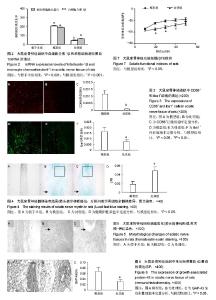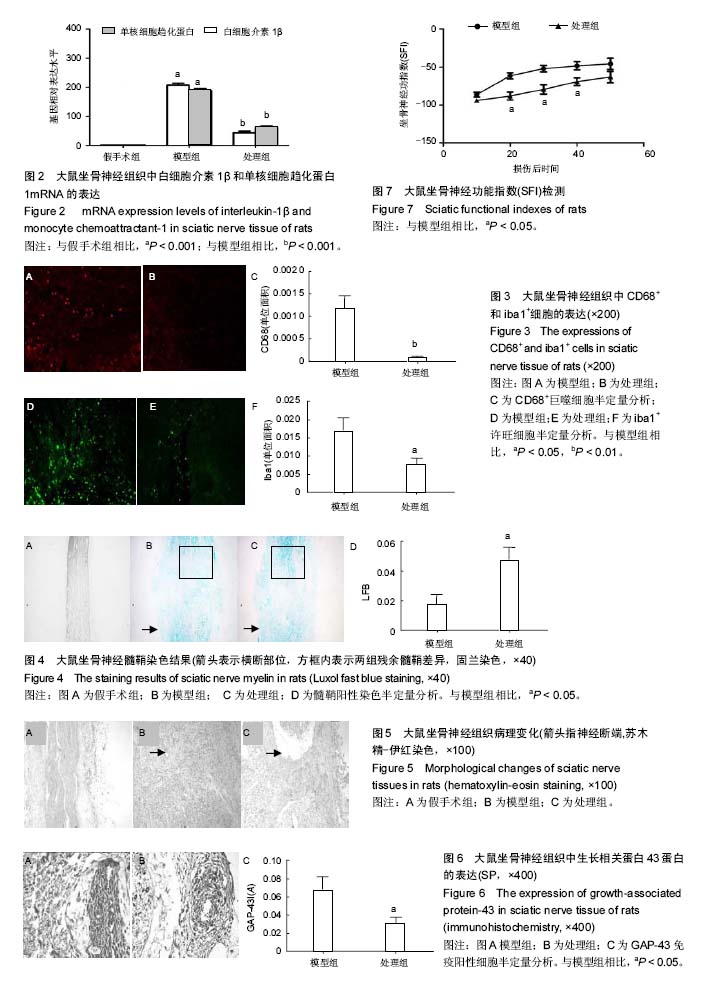| [1] Takeda K, Kaisho T, Akira S.Toll-like receptors. Annu Rev Immunol. 2003;21:335-376.
[2] Willis D, Li KW, Zheng JQ, et al.Differential transport and local translation of cytoskeletal, injury-response, and neurodegeneration protein mRNAs in axons. J Neurosci. 2005 ;25(4):778-791.
[3] Lehnardt S. Innate immunity and neuroinflammation in the CNS: the role of microglia in Toll-like receptor-mediated neuronal injury. Glia.2010;58(3): 253-263.
[4] Vallières N, Berard JL, David S, et al.Systemic injections of lipopolysaccharide accelerates myelin phagocytosis during Wallerian degeneration in the injured mouse spinal cord. Glia.2006;53(1):103-113.
[5] Beuche W, Friede RL.The role of non-resident cells in Wallerian degeneration. J Neurocytol. 1984;13(5): 767-796.
[6] Brück W, Huitinga I, Dijkstra CD. Liposome-mediated monocyte depletion during wallerian degeneration defines the role of hematogenous phagocytes in myelin removal. J Neurosci Res. 1996;46(4): 477-484.
[7] Stoll G, Griffin JW, Li CY. et al.Wallerian degeneration in the peripheral nervous system: participation of both Schwann cells and macrophages in myelin degradation. J Neurocytol. 1989;18(5):671-683.
[8] Perrin FE, Lacroix S, Avilés-Trigueros M, et al. Involvement of monocyte chemoattractant protein-1, macrophage inflammatory protein-1alpha and interleukin-1beta in Wallerian degeneration. Brain. 2005;128(Pt 4):854-866.
[9] Carroll SL, Frohnert PW.Expression of JE (monocyte chemoattractant protein-1) is induced by sciatic axotomy in wild type rodents but not in C57BL/Wld(s) mice. J Neuropathol Exp Neurol. 1998;57(10):915-930.
[10] Shamash S, Reichert F, Rotshenker S. The cytokine network of Wallerian degeneration: tumor necrosis factor-alpha, interleukin-1alpha, and interleukin-1beta J Neurosci. 2002;22(8):3052-3060.
[11] Ha GK, Parikh S, Huang Z, et al.Influence of injury severity on the rate and magnitude of the T lymphocyte and neuronal response to facial nerve axotomy. J Neuroimmunol. 2008;199(1-2): 18-23.
[12] Temporin K, Tanaka H, Kuroda Y,et al.Interleukin-1 beta promotes sensory nerve regeneration after sciatic nerve injury. Neurosci lett.2008;440(2): 130-3.
[13] Medzhitov R, Preston-Hurlburt P, Janeway CA Jr.A human homologue of the Drosophila Toll protein signals activation of adaptive immunity. Nature.1997; 388(6640): 394-397.
[14] Blanco AM, Guerri C. Ethanol intake enhances inflammatory mediators in brain: role of glial cells and TLR4/IL-1RI receptors. Front Biosci. 2007;12:2616- 2630.
[15] Zhou H, Lapointe BM, Clark SR, et al. A requirement for microglial TLR4 in leukocyte recruitment into brain in response to lipopolysaccharide. J Immunol. 2006; 177(11):8103-8110.
[16] 李志行,吕敬雷,陈萍,等. 缺血后处理局灶性脑缺血再灌注模型大鼠相关通路以及白细胞介素8的表达[J]. 中国组织工程研究,2015,19(49):7938-7944.
[17] 刘洁,花放. TLR4介导的信号转导通路在新生儿缺血缺氧性脑病中的作用[J]. 解剖科学进展,2015,31(6): 652-654+659.
[18] 王大永,徐翔,孙立倩,等. 亚低温治疗对脑出血大鼠TLR4/NF-κB介导的神经炎症反应的影响[J]. 神经解剖学杂志,2015,31(3):309-314.
[19] 郑为娜,王珊,生晓娜,等. TLR4与神经变性疾病和多发性硬化[J]. 中国神经免疫学和神经病学杂志,2015,22(4): 291-295.
[20] akashima K, Matsunaga N, Yoshimatsu M, et al.Analysis of binding site for the novel small-molecule TLR4 signal transduction inhibitor TAK-242 and its therapeutic effect on mouse sepsis model. Br J Pharmacol. 2009;157(7):1250-1262.
[21] Hua F, Tang H, Wang J, et al.TAK-242, an antagonist for Toll-like receptor 4, protects against acute cerebral ischemia/reperfusion injury in mice. J Cereb Blood Flow Metab. 2015;35(4):536-542.
[22] Gaudet AD, Popovich PG, Ramer MS.Wallerian degeneration: gaining perspective on inflammatory events after peripheral nerve injury. J Neuroinflammation. 2011 ;8:110.
[23] Taskinen HS, Röyttä M. Increased expression of chemokines (MCP-1, MIP-1alpha, RANTES) after peripheral nerve transection. J Peripher Nerv Syst. 2000;5(2):75-81.
[24] Siebert H, Sachse A, Kuziel WA, et al.The chemokine receptor CCR2 is involved in macrophage recruitment to the injured peripheral nervous system. J Neuroimmunol. 20002;110(1-2):177-185.
[25] Viader A, Chang LW, Fahrner T, et al. MicroRNAs modulate Schwann cell response to nerve injury by reinforcing transcriptional silencing of dedifferentiation-related genes. J Neurosci. 2011; 31(48): 17358-17369.
[26] Behrmann DL, Bresnahan JC, Beattie MS, et al. Spinal cord injury produced by consistent mechanical displacement of the cord in rats: behavioral and histologic analysis. J Neurotrauma. 1992;9(3):197-217.
[27] Aigner L, Arber S, Kapfhammer JP, et al. Overexpression of the neural growth-associated protein GAP-43 induces nerve sprouting in the adult nervous system of transgenic mice. Cell.1995:83(2): 269-278.
[28] Aigner L, Caroni P. Absence of persistent spreading, branching, and adhesion in GAP-43-depleted growth cones. J Cell Biol. 1995;128(4):647-460.
[29] Krekoski CA, Neubauer D, Graham JB,et al. Metalloproteinase-dependent predegeneration in vitro enhances axonal regeneration within acellular peripheral nerve graft . J Neurosci. 2002;22(23): 10408-10415.
[30] Aguayo AJ, Peyronnard JM, Bray GM. A quantitative ultrastructural study of regeneration from isolated proximal stumps of transected unmyelinated nerves. J Neuropathol Exp Neurol. 1973;32(2):256-270.
[31] 高鹏,夏玉军,季爱玉. 巨噬细胞与小鼠周围神经损伤再生的关系[J]. 青岛大学医学院学报,2016,52(1):71-74+77. |

